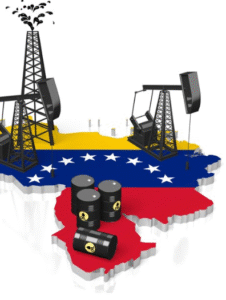$XOM $CL_F $BP
#OilPrices #Israel #Gaza #MiddleEast #Geopolitics #CrudeOil #EnergyMarkets #BrentCrude #OPEC #Iran #GlobalMarkets #Commodities
Israel has launched extensive airstrikes on Gaza after a ceasefire deal fell apart, with sources from both Israel and Gaza reporting at least 220 casualties, according to the BBC. The truce, which had been in place since mid-January, collapsed as the two sides failed to come to an agreement on extending its terms. This latest escalation has once again increased geopolitical tensions in the Middle East, a region critical to global energy markets. Historically, any violent flare-up in this strategically significant area has heightened concerns about crude oil supply disruptions, particularly due to the potential involvement of Iran, a key OPEC member and a staunch political ally of Hamas. Traders responded rapidly to the news, with Brent crude ticking up to $71.29 per barrel amid growing fears that prolonged instability could constrict oil supply flows and lead to additional price volatility.
Market analysts warn that if the conflict broadens further and draws in other regional actors, oil prices may spike even higher as investors hedge against geopolitical risk. Iran, which has frequently been at odds with Israel and Western powers, controls access to the Strait of Hormuz, a vital passage through which nearly a third of global seaborne oil trade flows. Any threats to this route would have significant repercussions for energy costs worldwide. Additionally, concerns regarding potential retaliatory measures, such as sanctions or disruptions to regional oil production, are factors that traders are closely monitoring. Bloomberg analysts noted that sustained conflict tends to result in speculative trading in commodities markets, with energy stocks—such as those of ExxonMobil ($XOM) and BP ($BP)—often rallying as oil prices surge in response to supply fears.
Beyond crude futures, equity markets reacted with mixed sentiment. Defense stocks saw slight gains as investors expected increased military spending and demand for weaponry, whereas broader indices showed hesitancy amid deteriorating geopolitical stability. The U.S. dollar, often seen as a safe-haven asset, strengthened modestly against major global currencies as investors sought refuge. Rising oil prices also add to existing inflationary pressures worldwide, complicating central banks’ policy decisions, particularly in the United States and Europe. The Federal Reserve has been navigating a complex economic landscape, attempting to balance rate adjustments while keeping inflation in check. With global energy prices at risk of another upswing, the potential for prolonged higher fuel costs could influence both monetary policy and consumer sentiment moving forward.
In the longer term, attention will remain on how diplomatic efforts unfold and whether major oil producers, such as Saudi Arabia and Russia, adjust their output in response to price fluctuations. The Organization of the Petroleum Exporting Countries (OPEC) has previously manipulated production levels in response to geopolitical triggers, and it remains to be seen whether another strategic response is in the pipeline. For now, the global financial landscape remains tense, with commodity markets bracing for further volatility. If the conflict deescalates, oil prices may stabilize, but should the situation worsen, traders and businesses must prepare for the likelihood of extended market turbulence across multiple sectors.











Comments are closed.